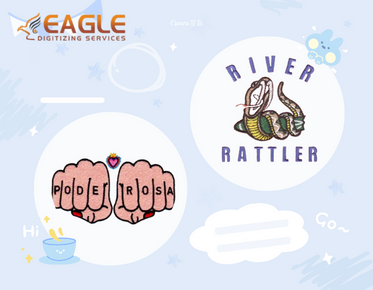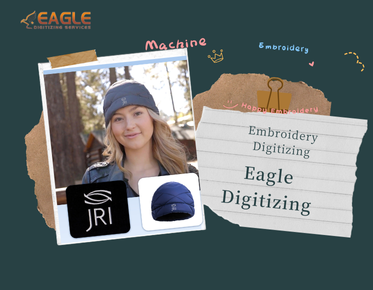How to Digitize Embroidery Design?
Embroidery digitizing is a fascinating process that transforms artwork into a format that embroidery machines can understand. This process involves converting a design into a digital file that dictates the path of the needle, ensuring that the final embroidered product matches the original design as closely as possible. In this blog, we will explore the steps involved in digitizing embroidery designs, the tools required, and how services like Eagle Digitizing can enhance this process.
Understanding the Basics of Embroidery Digitizing
Embroidery digitizing begins with understanding the artwork that needs to be converted. The design must be analyzed to determine the best way to translate it into stitches. This involves considering the type of fabric, the colors involved, and the complexity of the design. The digitizer must decide on the stitch type, direction, and density to ensure the design is accurately represented.
Step 1: Preparing the Artwork
The first step in digitizing embroidery is preparing the artwork. This involves cleaning up the design to ensure it is clear and free of unnecessary details that might complicate the digitizing process. The artwork should be in a high-resolution format, such as a vector file, to ensure precision during digitization.
Step 2: Choosing the Right Software
Choosing the right embroidery digitizing software is crucial. There are various software options available, each with its own set of features. Some popular choices include Wilcom, Hatch, and Pulse. These programs allow digitizers to create detailed stitch files and offer tools for editing and refining designs.
Step 3: Digitizing the Design
Once the artwork is prepared and the software is selected, the actual digitizing process begins. This involves mapping out the design in the software, selecting stitch types, and setting the stitch direction and density. The digitizer must also consider the fabric type and adjust the design accordingly to prevent issues like puckering or distortion.
Advanced Techniques in Embroidery Digitizing
For more complex designs, advanced techniques such as 3D puff embroidery or applique may be used. These techniques add depth and texture to the design, making it stand out. Digitizing for these techniques requires additional skill and precision to ensure the final product meets expectations.
3D Puff Embroidery
3D puff embroidery involves using a foam base to create a raised effect on the design. This technique is popular for caps and hats, where the raised design adds a unique touch. The digitizing process for 3D puff requires careful planning to ensure the foam is adequately covered and the design maintains its integrity.
Applique
Applique involves layering fabric pieces on top of the base fabric and securing them with stitches. This technique is used to add color and texture to designs. Digitizing for applique requires precision to ensure the fabric pieces are correctly placed and the stitches hold them securely.
Leveraging Professional Services
While digitizing embroidery designs can be done independently, many businesses and individuals opt to use professional services to ensure quality and efficiency. Eagle Digitizing is one such service that offers expert embroidery digitizing. With over 25 years of experience, Eagle Digitizing provides high-quality digitizing services with quick turnaround times and competitive pricing.
Eagle Digitizing specializes in converting artwork into stitch files that can be read by embroidery machines. Their team of skilled digitizers uses the latest techniques to ensure each design is digitized with precision. They offer a range of services, including 3D puff digitizing and applique, and provide free quotes and revisions to ensure customer satisfaction【4:0†source】.
Choosing the Right Service Provider
When selecting a digitizing service provider, consider factors such as experience, turnaround time, and customer reviews. A reliable provider like Eagle Digitizing offers a satisfaction guarantee and has a proven track record of delivering high-quality digitized designs. They also provide support for various file formats, ensuring compatibility with different embroidery machines【4:2†source】.
Future Trends in Embroidery Digitizing
As technology advances, the field of embroidery digitizing continues to evolve. New software developments and techniques are making it easier to create complex designs with greater accuracy. In the future, we can expect to see more automation in the digitizing process, allowing for faster and more efficient production of embroidered products.
Additionally, the integration of artificial intelligence in digitizing software could further enhance the precision and creativity of embroidery designs. This could open up new possibilities for customization and personalization in the embroidery industry.
Conclusion
Embroidery digitizing is a crucial step in transforming artwork into beautiful embroidered products. Whether you're a hobbyist or a business owner, understanding the digitizing process and leveraging professional services can help you achieve the best results. As the industry continues to innovate, staying informed about the latest trends and technologies will ensure you remain competitive and creative in your embroidery endeavors.



